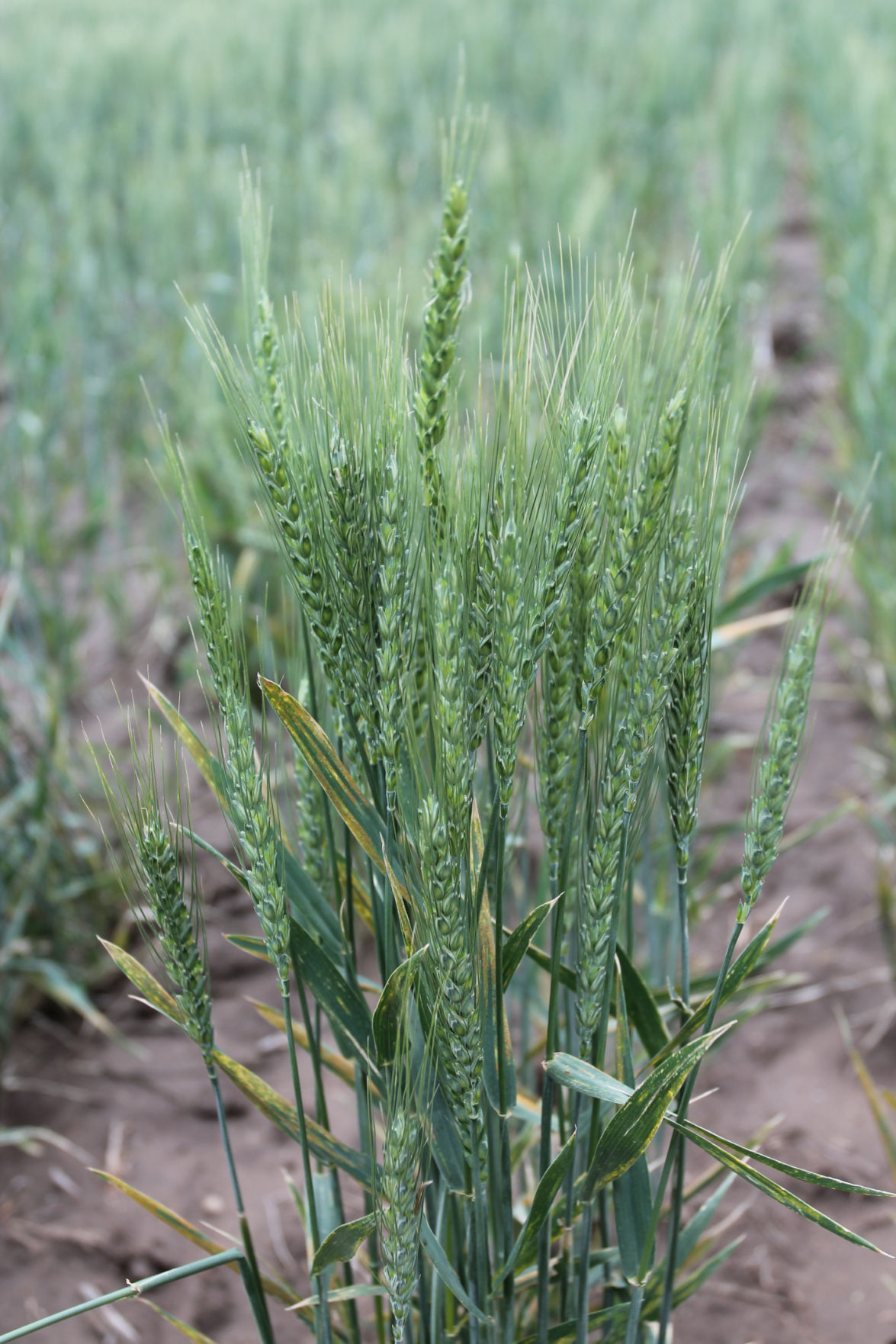Stripe rust is starting to show up in the hard red winter wheat belt states of Kansas and Oklahoma, according to Kansas State University’s agronomy experts.
The fungal disease causes yellow, blister-like lesions that are arranged in stripes, according to K-State Research and Extension. The disease is most common on leaves, but heads also can be infected when the disease is severe. Infections of the leaf sheaths and stems are rare.
Because stripe rust can cause yield losses up to 40%, according to researchers, growers need to be proactive to protect the crop and their bottom line.
Syngenta Agronomy Service Representative T.J. Binns said the pathogen originates from Texas and winds can help push it northward.
With favorable yields and prices per bushel that are significantly above $6 in many regions, applying a foliar fungicide can help protect the crop at a critical time in the coming weeks.
If a producer experiences stripe rust, the loss comes at a premium to that promising crop, Binns said, adding when it comes to wheat, it takes very little loss to start to hurt the return on the investment.
While experts suggest scouting fields, he said, producers should also try to get detailed information from producers who may be as much as 60 miles south of them.
Stripe rust does not overwinter in Kansas. It does overwinter in Texas, and the foliar disease spreads northward because spores move with the prevailing southerly wind.
Foliar fungicides can be used and placed in a ground rig or aerial application service.
Wheat growth varied across the state, but as of late April reports are indicating stripe rust in southeast Kansas and reports are starting to surface in both northeast and southwest Kansas. His recommendation to growers is to not wait until they have stripe rust but to use a preventative application if they are in an area that could get it.
“If we wait until we see the rust on a plant it has already been infected for seven to 10 days,” he said. “That leaf tissue has already been lost and we’ll never be able to get any of it back.”
Once the wheat reaches its reproductive stage and starts to head out, the damage starts to dramatically show up, he said.
Binns said the good news is a fungicide treatment can still help the current crop as treatment starts when the 50% flag leaf emergence. “The flag leaf is what we are trying to protect.”
Once a fungicide is applied it takes about a week for it to work its way through the plant to prevent stripe rust, he said.
Sage advice is for growers to look at their situation and if the environment is right and there is a possibility of the disease infecting their wheat they should take action.
“We’ve had enough south winds to have the spores blown up here,” he said, adding that treatments can provide a sense of assurance particularly in regions where stripe rust could be an unwelcome disease. “My recommendation is the wheat has potential and there may be an expectation you’ll be better off putting an application on all the fields.”
Syngenta’s effective products in the High Plains wheat region include Quilt Xcel—a mixture of Quadris and Tilt (propiconazole) fungicides—and Trivapro, Binns said. Trivapro contains the same trusted active ingredients found in Quilt Xcel and an additional site of action, SOLATENOL technology, for extended residual control.
The company also urges growers to read and follow label instructions. Some products may not be registered for sale or use in all states or counties. Growers should contact their local Extension service to ensure registration status.
Dave Bergmeier can be reached at 620-227-1822 or [email protected].




